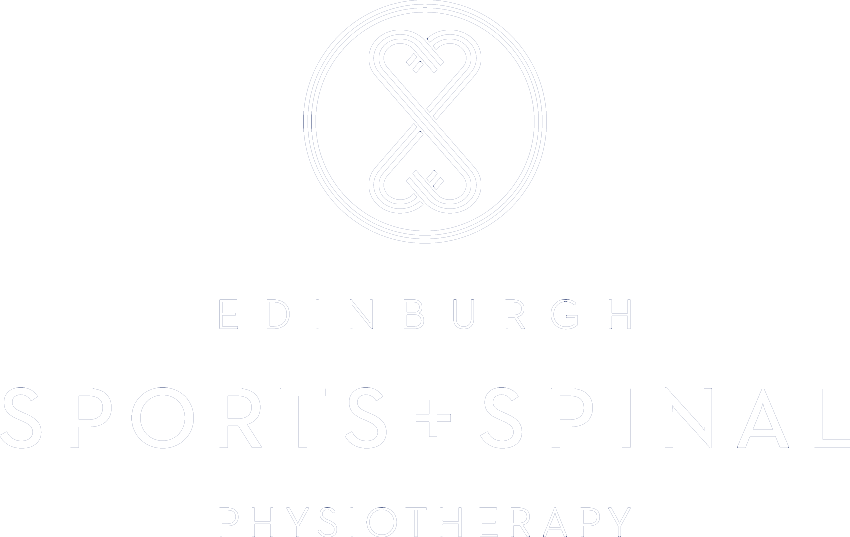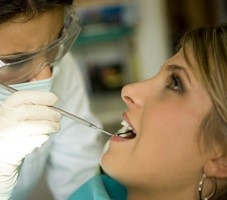
Presenting Condition:
Constant dull ache behind and at the top of her left shoulder. Constant tightness and ache in the left side of the neck, with some associated grinding noises. Mid and upper back (between shoulder blades) stiffness and aching, which often is accompanied with a burning sensation.
History of presenting condition:
Slow onset of pain, with the problem gradually worsening over the last 18 months. Pain was generally worse towards the end of the day and especially after a long day at work. The pain eased slightly using a hot pack or under a hot shower, stretching also helped a bit.
Physiotherapy Observation
Shoulder blades were both elevated and protracted (forward), with the left side more than the right. She also displayed a forward head and neck position.
Myofascial trigger points (“knots”) were palpated in the following muscles: Levator Scapulae, Pectoralis Minor, upper fibres of Trapezius and Rhomboids. The small facet joints to the left of the neck and upper back were stiff and painful.
Shoulder movement was stiff at the end of range, particularly when raising her arms above head height. Upper back mobility was stiff particularly on active extension, and left rotation.
Displayed weak muscle strength in the muscles below the shoulder blades: lower fibres of Trapezius. The movement, stability and control of her shoulder blades was poor.
Impression from this data
Postural dysfunction. Nociceptive somatic ischaemic pain.
As a Dentist this patient’s postural position, for 7+ hours a day and 5 days a week, involves being seated, having elevated arms, a forward head position, and increased kyphotic thoracic spine.
Meaning…
Static sustained muscle contractions, static joint positions, and minimal movement throughout the working day. i.e. postural dysfunction.
Lack of movement for long periods of time leads to myofascial trigger points becoming taught. Being in a prolonged kyphotic Thoracic spine position, as well as having poor Scapulothoracic function will lead to Thoracic facet joints stiffness. Maintaining a forward head position will cause cervical facet joint stiffness. Sustained contraction of muscles, and lack of joint movement leads to reduced blood supply to these areas. A lack oxygen and an inability to remove metabolic chemicals, results in a localised acidic environment. Hence, as the day progresses, these muscles fatigue, joints stiffen and therefore the dull ache and burning sensations intensify, i.e. Nociceptive somatic ischaemic pain.
Why does heat and movement provide some relief?
Hot packs increase vasodilation and movement actively contracts muscles. Both processes increase blood flow to and from the area, therefore oxygen levels rise and acidic chemicals are flushed from the area. Resulting in a temporary reduction of pain, until the poor static postural activity returns.
On a neural point of view, heat and movement both excite A beta nerve fibres which stimulate the dorsal horn to block painful signals from C-fibre nerves. Also known as the pain gate theory.
What physio treatment plan was required…
- Reduction of active myofascial trigger point pain
- Postural strengthening of the cervical muscles and increased mobility of the joints
- Retraining and proprioception of the Scapulothoracic Joint (shoulder blade and thoracic spine)
Movements and stability of of the shoulder blades are a very important element of the shoulder’s overall function and thus assisting the dentist’s overall manual skills. The muscles that attach to both the thorax (ribs and upper part of the spine) and scapula ( shoulder blade) provide stability for the shoulder/arm, whilst also producing the movements of the scapula. Therefore, dissociation between these muscles and overall strength is required to have efficient stability and movement of the shoulder.
Edinburgh Sports and Spinal Physiotherapy Treatment
- Soft tissue massage
- Improves circulation and lymphatic flow
- Actively assists the removal of metabolic waste
- Decreases Muscle Tension
- Aids relaxation
Acupuncture dry needling technique
- Single use sterile acupuncture needles used
- Effectively reduces painful myofascial trigger points
Kinesiotaping
- Light weight, water resistant, long lasting and comfortable to wear
- Applied along muscles, tendons and joints
- Creates neuromuscular feedback (proprioception) to either inhibit or facilitate muscle contraction
Postural strengthening techniques
- Tailored to the individual plan
- Strengthening neck and scapulothoracic muscles
- Preventing a recurrence of symptoms
- Leaves you stronger, confident and pain free for your career and life
Monthly Sports Massage and training
- Aids in relaxation
- Helps to prevent a recurrence of painful symptoms
- Maintains good postural habits and muscle strength
- Helps with mobility
- Move better, feel better
Outcome
“Excellent” Anna, Edinburgh,
“As a dentist I frequently have sore shoulders and worry about my back. The treatment I have received from Richard at Edinburgh Sports and Spinal Physiotherapy has been excellent. Very thorough and comprehensive. I would definitely recommend this clinic and Richard.”

